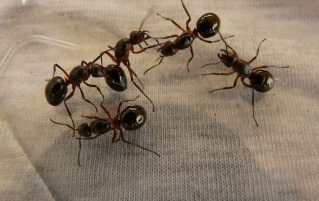

If you need some more help with numbers, try our latest revision guide. This week’s guide is all about factors and multiples. Before work starts though, time for some completely random facts about numbers!
One: Apparently this is the average number of poos sloths have each week. They can lose up to 1/3 of their body weight each time they go. It is also the number of centimetres each hair grows in a month on average.
Ten : About 10 per cent of the world is left-handed. The world’s largest omelette was 10 metres wide. Crabs have 10 legs, and apparently the fleas that lived on dinosaurs were 10 times bigger than the fleas you get today
One million: This is the number of queen ants that were found in the largest ever ants’ nest! Also, in 2007, a world record was set by Jeremy Harper, of Birmingham, Alabama for the highest number counted out loud. He verbally counted every number up to a million. He counted for approximately 16 hours a day, a total duration of 89 days, and averaging just over 11,200 numbers per day.
“How to work with Factors and Multiples” explains what factors, prime factors and multiples are. It includes explanations of how to find factors and multiples, and how to complete a Prime Factor Tree. Included, as always, are questions to try, and answers to check your understanding.
To see the guide, click on the picture below.
